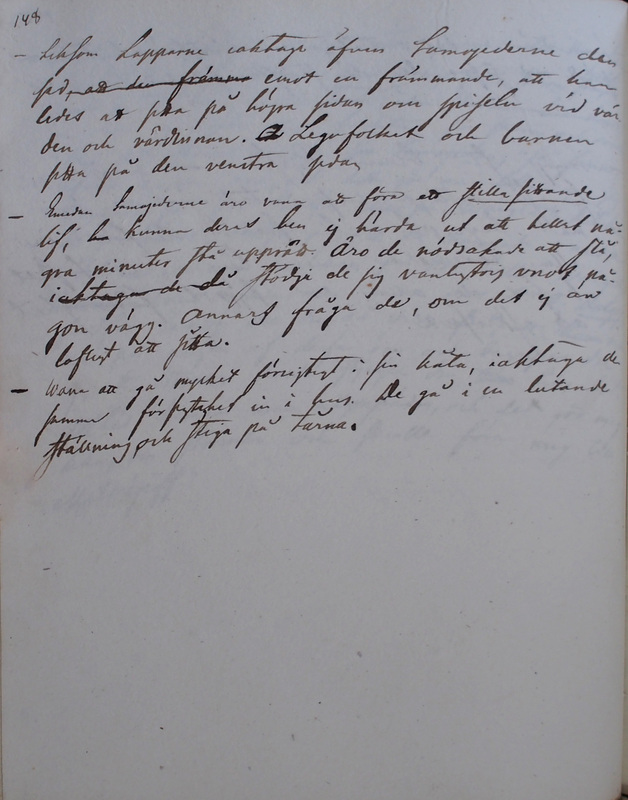Ethnographiska, historiska och statistiska anmärkningar. 148
Title
Ethnographiska, historiska och statistiska anmärkningar. 148
Description
| Liksom Lapparne iaktaga äfven Samojederne den sed, att du främma emot en främmande, att han ledes att sitta på högra sidan om spiseln vid vär- den och värdinnan.
Legafolket och barnenThe Nenets tent is divided into two halves by a virtual line crossing the tent from the door to the back, TN сиʹ. The right-hand side is the men’s side and is higher in social status, whereas the left-hand side is the women’s and children’s. (Chomič 1966: 108–109; Stammler 2005: 85–87; Golovnev, Kukanov & Perevalova 2018: 216–237)
sitta på den venstra sidan. |
Like the Lapps, the Samoyeds also follow the custom that you set the stranger to sit on the right-hand side of the hearth beside the host and the hostess. The workers and the children sit on the left-hand side. |
| Emedan Samojederne äro vana att föra ett stilla sittande lif, kunna deras ben ej härda ut att hellst nå- gra minuter stå upprätt. Äro de nödsakade att stå, iaktaga de då stödja de sig vanligtvis mot nå- gon vägg. Annars fråga de, om de ej an- lofligt att sitta. |
Because the Samoyeds are used to sitting and to a still life, their bones cannot endure standing upright even for a few minutes. If they are forced to stand, then they usually lean on a wall. Otherwise they ask if they could sit down. |
| Wana att gå mycket försiqtigt i sin kåta, iaktaga de samma försigtighet in i hus. De gå i en lutande ställning och stiga på tårna. |

